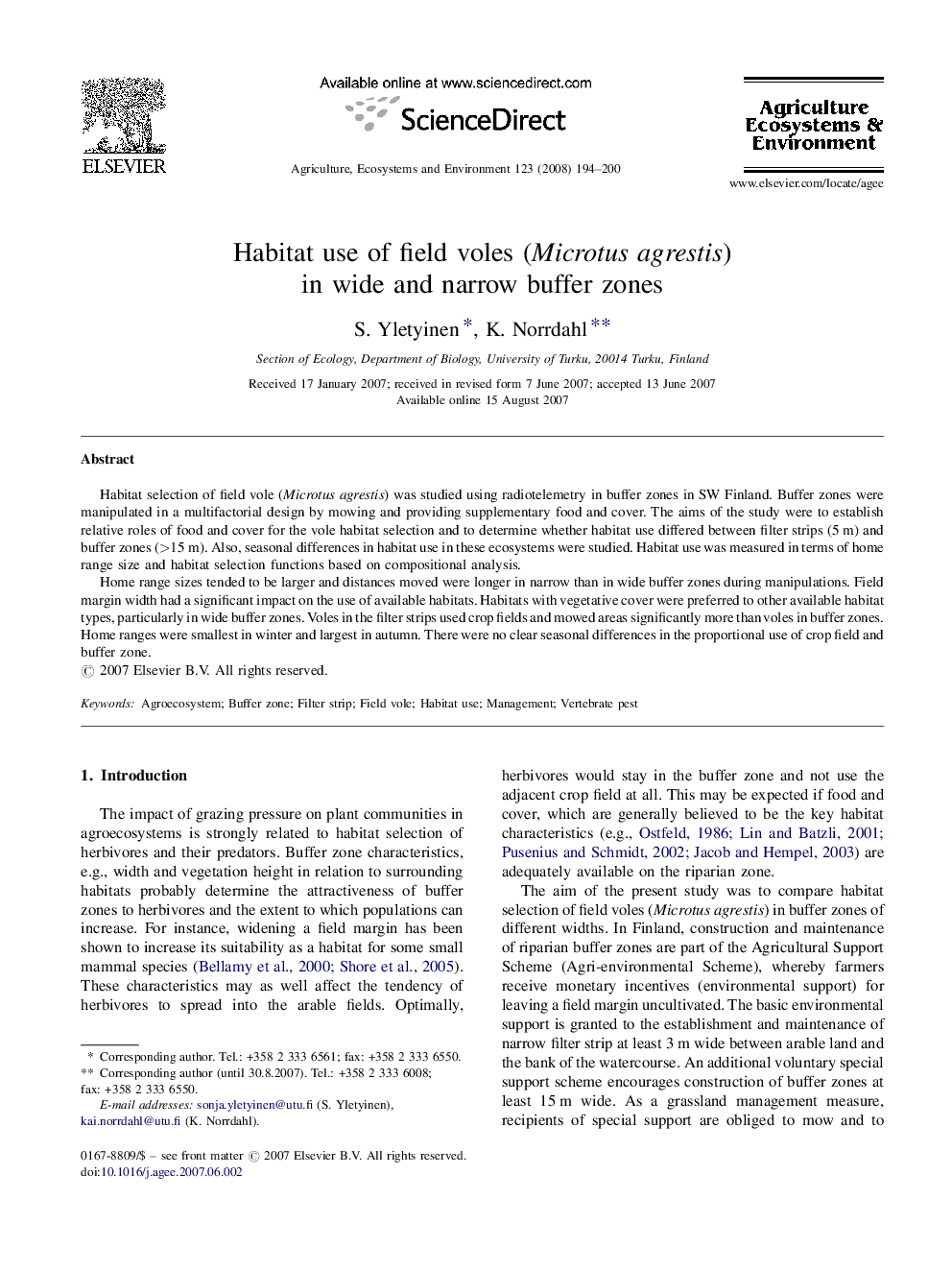| Article ID | Journal | Published Year | Pages | File Type |
|---|---|---|---|---|
| 2415774 | Agriculture, Ecosystems & Environment | 2008 | 7 Pages |
Habitat selection of field vole (Microtus agrestis) was studied using radiotelemetry in buffer zones in SW Finland. Buffer zones were manipulated in a multifactorial design by mowing and providing supplementary food and cover. The aims of the study were to establish relative roles of food and cover for the vole habitat selection and to determine whether habitat use differed between filter strips (5 m) and buffer zones (>15 m). Also, seasonal differences in habitat use in these ecosystems were studied. Habitat use was measured in terms of home range size and habitat selection functions based on compositional analysis.Home range sizes tended to be larger and distances moved were longer in narrow than in wide buffer zones during manipulations. Field margin width had a significant impact on the use of available habitats. Habitats with vegetative cover were preferred to other available habitat types, particularly in wide buffer zones. Voles in the filter strips used crop fields and mowed areas significantly more than voles in buffer zones. Home ranges were smallest in winter and largest in autumn. There were no clear seasonal differences in the proportional use of crop field and buffer zone.
